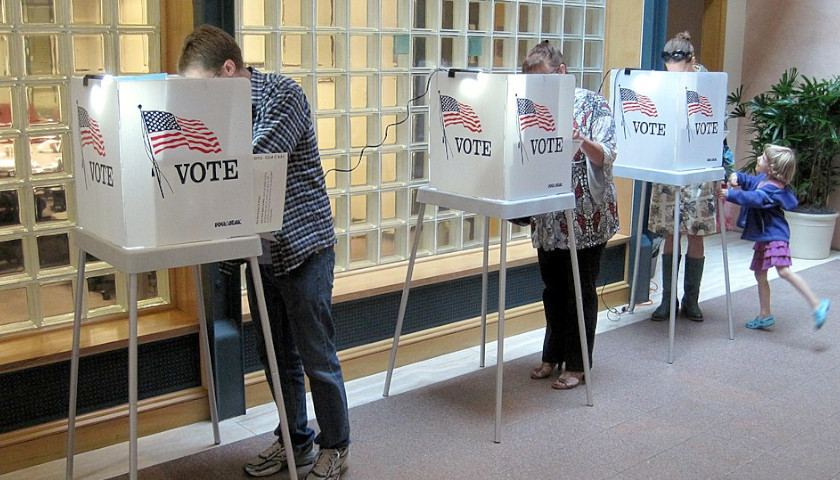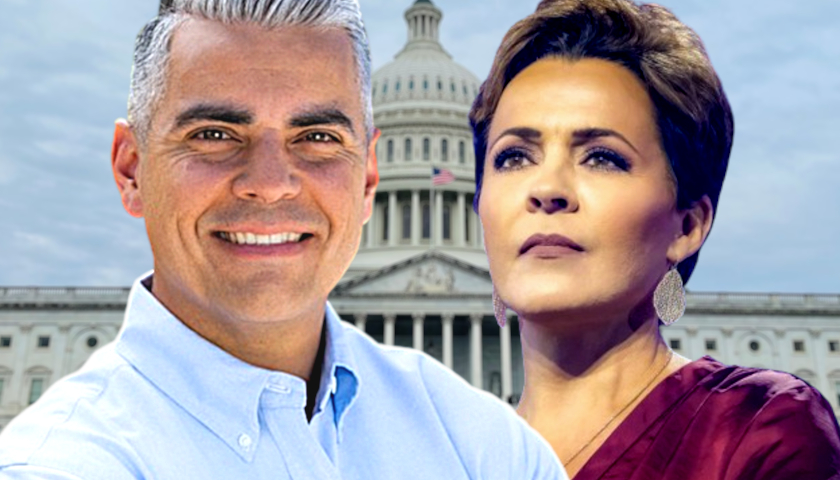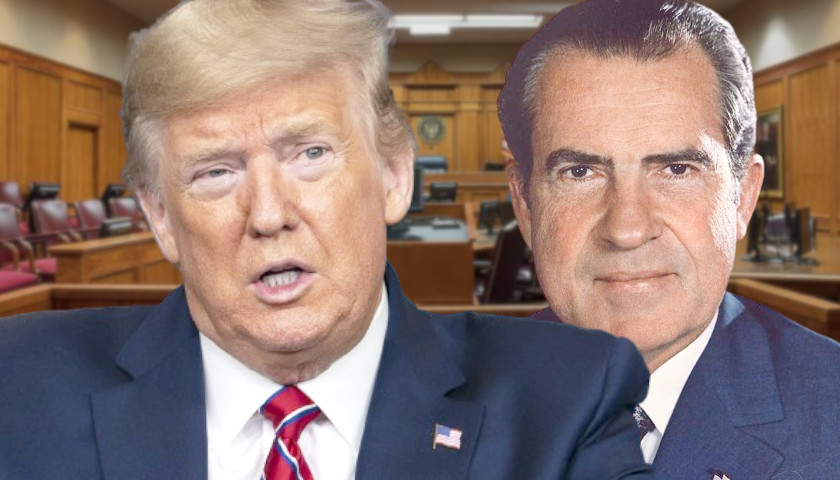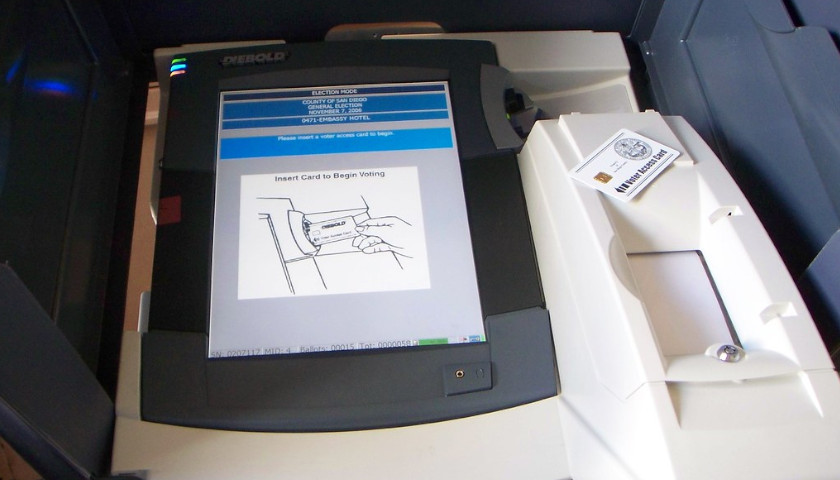Three Pennsylvania House Democrats this week proposed allowing localities to adopt ranked-choice voting (RCV) in municipal elections.
Under such a system, voters would rank their options rather than choose just one in an election with more than two candidates for one office.
If one hopeful receives over 50 percent of the vote, he or she wins. If none meet that threshold, vote counters conduct an instant runoff wherein the lowest first-choice vote-getter is eliminated, and voters who selected that person have their second-choice votes added to the top-vote tally. This process repeats until one candidate receives over half of the vote.
Activist groups including the leftist March on Harrisburg and the reformist Forward Party are clamoring for RCV. State Representative Jared Solomon (D-Philadelphia), who is proposing the bill alongside State Representatives Chris Rabb (D-Philadelphia) and Arvind Venkat (D-McCandless), told The Pennsylvania Daily Star he believes RCV will improve democracy in the Keystone State.
“When we have a multi-candidate race, candidates typically pick a lane,” he said. “They think about only talking to certain voters and therefore a very small number of people control our primaries. Instead, let’s take voter preferences into account, and by doing that you rejigger the relationship between candidate and voter; now, candidates, if they want to win, have to talk to all voters within a primary electorate.”
Many have made similar points in the wake of the Philadelphia Democratic mayoral primary in which Cherelle Parker won only 32.4 percent of the vote to proceed to a downhill general election battle against Republican David Oh.
“Our current election system made sense when both parties were competitive citywide, which was the case for the post-WWII period up through 2003,” U.S. Representative Brendan Boyle (D-PA-2) wrote in a pro-RCV tweetstorm on Election Day. “Since then, however, it’s clear that the winner of the Democratic Primary will be the de facto next mayor…. We need to move toward either RCV or a top-two system.”
Many states use RCV in at least some local elections, while Alaska and Maine use it in federal and state contests. Opponents say the idea would only complicate the voting process, recalling that Maine supporters of RCV published a 19-page instruction manual to instruct voters on the policy. Jason Snead, executive director of the nonprofit Honest Elections Project and co-chair of Stop RCV, added that asking someone to familiarize himself with several dozen candidates, some of them obscure, will perplex many people.
“Ranked-choice voting makes voting harder; there’s absolutely no question about that,” he said. “By requiring that people consider the platforms of often fringe candidates and then go through exercises ranking those candidates, you can imagine how it might seem fairly straightforward if you imagine a single race with five people. Now, multiply that by 10, 15 or 20 when you account for federal races, statewide races, legislative races, local races.”
Snead insisted that this would be an unnecessary thing to ask people to undertake to improve democracy, something he said can just as easily thrive when it produces plurality, rather than majority, results. He noted successful American presidents, including Abraham Lincoln, won the election with less than 50 percent of the vote.
Snead observed relatively little grassroots enthusiasm for RCV, noting that its advocates’ efforts in many states receive the bulk of their funding from a small number of high-dollar backers, including leftist billionaire George Soros’s Open Society Foundations.
RCV foes also complain that those who do not rank all candidates in a race will find their votes left out of the final instant runoff to arrive at a majority tally. This is known as “ballot exhaustion,” something Heritage Foundation legal fellow Zack Smith said has been a demonstrable problem where RCV has been implemented so far.
“Frankly, many voters end up getting disenfranchised by the ranked-choice voting process because they simply stop filling out their ballots,” he said. “So if it goes to three, four, five rounds, many voters don’t rank that many candidates if there are even that many candidates for an election, so often you have a very small majority of people who still end up ultimately selecting the winner of a race.”
Solomon countered the critics, arguing that ranking candidates is easy.
“It’s pretty easy to rank,” he said. “We do it all the time. We’re a society that ranks. We rank everything: We rank movies, we rank websites, we rank athletes. It’s pretty straightforward.”
Another concern Smith mentioned pertains to the administrative difficulties many jurisdictions using RCV have faced. Those include New York City, which took two weeks to determine Eric Adams’s 2021 Democratic mayoral primary win, and Alameda County, California which incorrectly tabulated votes in a 2022 Oakland school board race.
Still, many believe it’s possible to implement RCV smoothly. An emerging third-party force favoring RCV in Pennsylvania and elsewhere is the Forward Party, which has made the idea a major priority.
“The bigger objective is really how do we get more people to vote and participate in democracy,” said Pennsylvania Forward Party volunteer and adviser Ethan Demme, particularly lamenting the example of this year’s Philadelphia primary. “The way it currently works means we have super low turnout and then a plurality of a major party in a region picks the candidate that is going to win the general.”
Solomon said he hopes RCV will be one of the numerous changes to Pennsylvania elections, including automatic voter registration and open primaries.
“When you look at the polarization of our politics, we want to give people a true claim, a true ownership of their democracy and I think you do that through a whole host of reforms…,” he said. “Ranked-choice voting is just another piece to that democratic puzzle that is critical.”
– – –
Bradley Vasoli is managing editor of The Pennsylvania Daily Star. Follow Brad on Twitter at @BVasoli. Email tips to [email protected].
Photo “People Voting” by Danny Howard. CC BY-SA 2.0.









Don’t let them put this bastardry in place. We have “preferential voting” in place in Australia, same thing as ranked choice, that has the insane result of people being elected with 12% of direct votes. It can be manipulated by small parties, in effect, creating a voting bloc that can destroy any claim to integrity in the system.